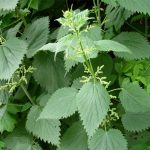Pine Tree
The Pine Tree is one of the most resourceful trees I know, fresh pine needles make a refreshing cup of tea that is full of vitamin C, the Pine Cones have their uses too as it has been reported ancient tribes used them as combs / brushes and not forgetting the delicious pine nuts hidden within. Pine cones are a familiar sight at Christmas and used as decorations, they also make a great item for arts and crafts and the possibilities to make art from them are endless, I have used them in the past to make miniature trees for a train track diorama, and they looked great. In bush craft and survivalist communities, they are a great resource to make a resin glue and a preserver for wood, which comes in handy when making tools and other useful items. Pine resin can also be used to seal wounds which is especially handy if you don’t have the material for stitches.
Pine trees have long been an ingredient to prepare herbal tea. Indeed, its benefits are known to treat:
- – rheumatism and wounds that are rebellious to healing (in the form of lotions and creams)
- – common colds and pulmonary tract mucus lining inflammation (in the form of inhaled vapour treatment).
Pine tree is particularly recommended to treat diseases resulting from nerve malfunction, neuralgic disorders and rheumatism.
Relaxing in a bathtub with pine tree extracts is for sure beneficial to your health.
To best appreciate its health benefits, keep the least tender shoots from your collection of fresh young shoots, and add them to the hot water. Use a cloth pouch to make it easy to pick the leaves out later and throw them to the compost.
It is possible to bathe in water infused with pine as described above, but inhaling the raw power of a pine tree forest in nature is another experience altogether.
Indeed, if you’ve got the chance, go for a walk in a thick pine tree forest, and gulp the air into your lungs. It is loaded with pine extract, a lemony camphor-like fragrance.
Pine trees are a great resource in the wild. You can make cordage out of the roots, tea from the needles, and pitch or tar from the sap. Pine resin is also flammable and can be used as an accelerant in fires for short, powerful bursts of heat. The sap also contains compounds which prevent the growth of microorganisms, making it a great sealer for open cuts or deeper flesh wounds. Pine resin is easy to carry, too. Chip a hardened piece off a damaged pine tree and later, when you need to put it to use, heat it over a fire to convert it back into its liquid (easily usable) state.
Here’s how to use Pine resin in a homemade glue recipe.
- Collect the resin from a pine tree. Here’s a method to tap a pine tree to obtain the sap from a tree.
- Melt the resin. If it ignites, blow out the flame and move the container to better control the heating process. Try to not overheat the resin, as the compounds can be destroyed the longer they are subjected to heat.
- Add 1 part hardwood charcoal powder. This helps temper the resin and reduces its stickiness.
- Add 1 part filler material. This can be ground plant material (crushed to a fine powder) or rabbit or deer scat/droppings (dried and ground up). In a pinch, you may also substitute sawdust, bone dust, or animal hair. The filler material helps strengthen the glue compound.
- If you wish to make the resultant glue more flexible, so it can be easily worked, add one part fat, tallow, or beeswax to the mixture.
- Mix thoroughly.
- Apply using a stick.
After the glue hardens, it will resemble hardened glass.
Dried pine pitch glue can be reheated to convert it back to its liquid state. Dip a stick into the mixture and remove, allowing the glob of glue to harden on the stick. Re-dip the stick to add additional layers of glue (as it cools, you may wish to roll it between your hands to compress and shape it). The finished lolly of pine pitch glue is ready to be stored and carried with you, ready to be reheated when needed.
The pineal gland is a remarkable feature of the human experience. Nestled in the brain between the two hemispheres, it is a source of endless intrigue in the realm of mysticism. Sometimes the Pineal Gland is referred to as our “third eye” the “dream centre” or my favourite, the “mystic seed.”
The Pineal Gland is shaped very much like the pine cone and lies at the centre of our brain and is intimately linked to our body’s perception of light. The Pineal modulates our wake-sleep patterns and circadian rhythms.
It’s totally fascinating that both the pine cone and the Pineal Gland not only look like each other but are also light sensitive. More articles here.






